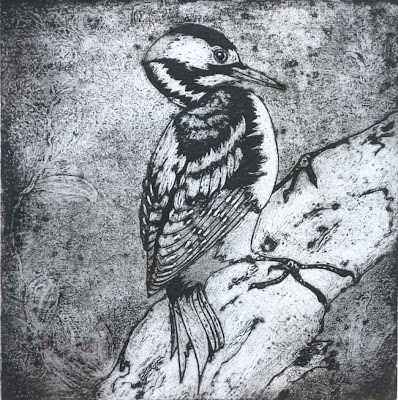Some days I find sculpting more of a challenge than usual. I just don't seem to be able to get the look I want. Often I take myself off for a good brisk walk, to clear the head, and come back to the stone with fresh eyes.
There are times when nothing seems to work and I despair of my ability. A little while ago I was working on a commission and got 'stuck'. For some reason I found it impossible to get the 'liveliness' that I wanted and I worked round and round with the chisel, taking off a little at a time to test the way, until I had only a tiny covering of stone left to get it right.
I put my chisels down and set about working out where I was going wrong. I thought about it over the next few days, and it started to become a bigger and bigger knot, the more I thought, the more impossible a solution seemed. So I tried not thinking about it. Worse still!
It seemed to be too complicated. So I went back to basics, and looked at some of man's earliest mark-making in stone. I found some fascinating examples, but what struck me most were the Fish Gods of the Danube.
These stone heads, with fish-like features but no bodies were carved in about 5000 BC by Stone Age men living in a settled community at Lepenski Vir, in what is now Yugoslavia. The settlement was on the banks of the Danube, and the river probably provided the settlers with much of their food. The carvings are thought to represent Fish Gods revered by the settlers.
To me they are so powerful and strong, full of energy and spirit and yet quite simple in form.
There in a moment, I had it, I was trying to be too clever and complicated in my carving! What I needed to do was carve with the feeling, meaning and purity that I felt the Stone Age men did.
Immediately I carved myself a Fish God copy, to try and know what it was to produce the icon - it doesn't match the brilliance of the originals, but I keep it at the workshop as a reminder that I must carve with my own spirit and must keep in simple!









































